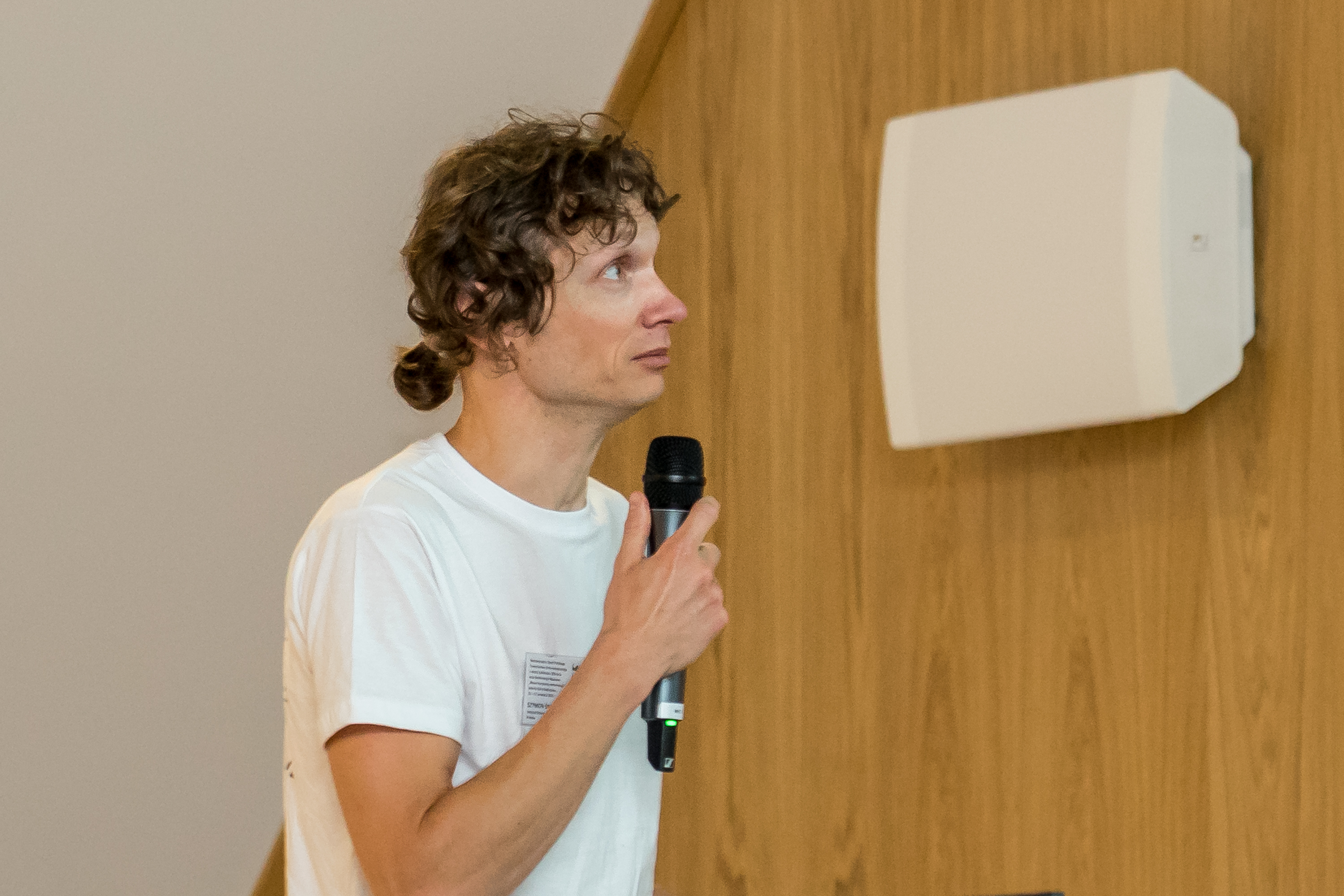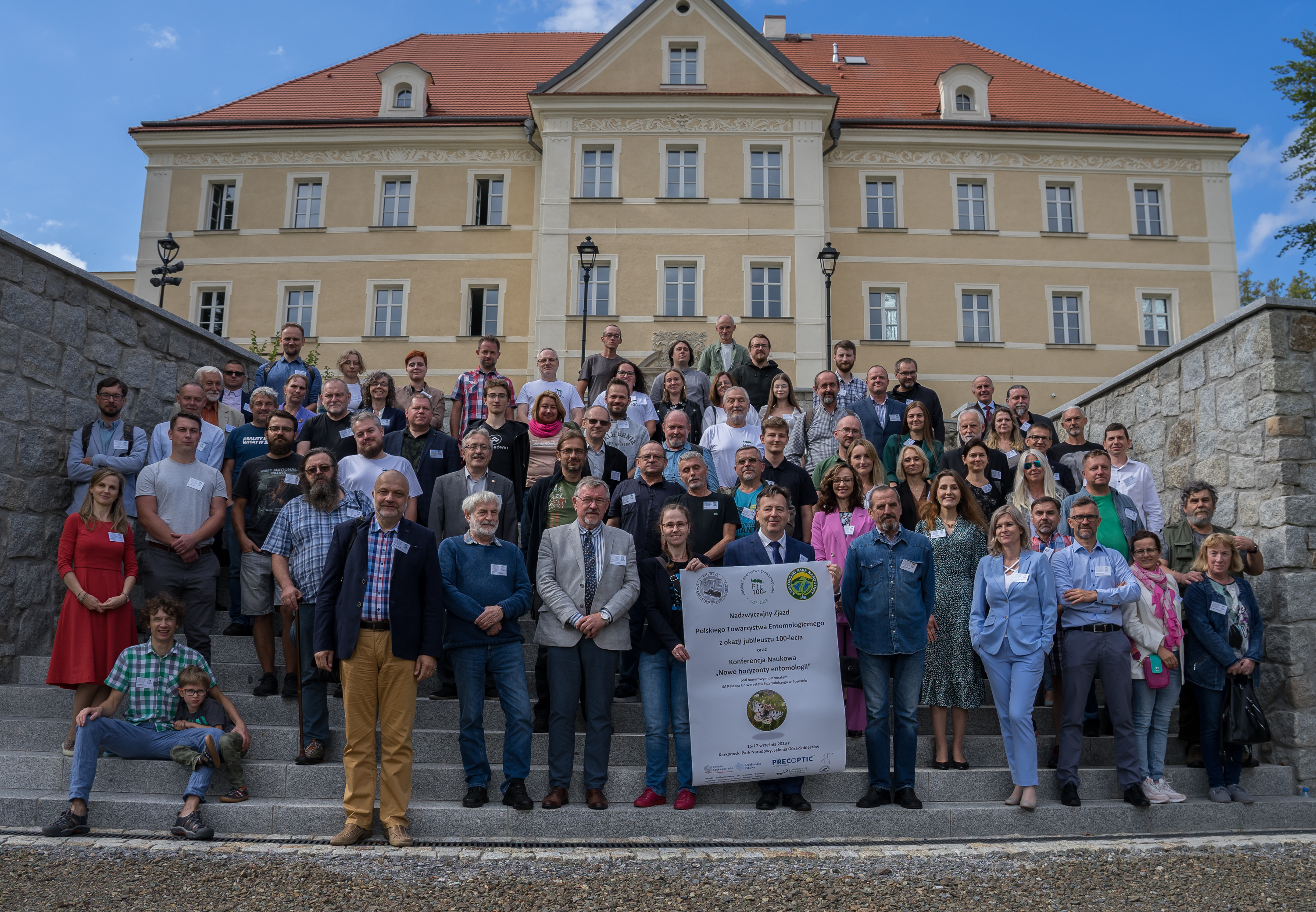Two researchers from the Institute of Nature Conservation PAS, dr Maria J. Gołąb and dr hab. Szymon Śniegula, prof. IOP PAN, were invited to the Congress of the Polish Entomological Society in celebration of its 100th anniversary.
During the event took place scientific conference entitled: 'New Horizons in Entomology’.
The event took place at the Karkonosze National Park headquarters in Jelenia Góra, 14-17 September 2023.
The two researchers jointly delivered a half-hour presentation entitled "Environmental Gradient and Key Traits in Natural and Sexual Selection in Odonates", presenting the latest research findings conducted within projects funded by the National Science Centre (grant OPUS - 2019/33/B/NZ8/00521) and the Norwegian Financial Mechanism for the years 2014–2021 (Norwegian Funds) – project ECOPOND (2019/34/H/NZ8/00683).
More information about the Congress of the Polish Entomological Society can be found on the website of the Polish Entomological Society and on their Facebook.

Speaker: dr hab. Szymon Śniegula, prof. IOP PAN

Speaker: dr Maria J. Gołąb

Conference participants, photos: Przemysław Zięba
Environmental gradient and dragonfly traits key to natural and sexual selection
Maria J. Gołąb, Szymon Śniegula
Instytut Ochrony Przyrody PAN, al. Mickiewicza 33, 31-120 Kraków
Dragonflies (Odonata) are considered model organisms for ecological and evolutionary studies. In our work, we design experiments that take into account gradients of biotic and abiotic factors that can influence insect natural and sexual selection as environmental change proceeds. Using the example of the shining dawn dragonfly, we tested whether dragonfly behaviour differed in distant populations. The work showed that male activity increased with latitude. Individuals from the north were the most bold, while males from the centre of the range showed the greatest commitment to courtship. These results suggest, among other things, that northern populations may be actively colonising new areas. Other experiments, carried out along a range gradient of the common scabbardfish, aimed to test how latitude might affect sexual selection in this species. These showed, among other things, that females from the centre of the species' range were the most selective, while males from the north had the highest mating efficiency. Which may affect the quality of offspring at the edge of the range. In turn, laboratory experiments on scabbardia larvae from different regions showed that common-garden rearing conditions can produce different results from those carried out under conditions that mimic natural seasonal changes. Subsequent experiments on the stickleback, inspired by earlier measurements of dragonfly bodies in the field, were designed to test whether evolutionary potential would vary along a temperature gradient in individuals from distant regions. The results showed that dragonflies from the north, experiencing the shortest season (stress), showed the lowest genetic variability in egg hatch date and larval growth rate, and the traits studied were strongly correlated. This implies that populations at the edge of their range have the least capacity for evolutionary change to occur, and thus may have difficulty adapting to climate change. In contrast, exposure of common scabbard eggs to the presence (kairomones) of an invasive predator species and heavy metals affected, among other things, larval development length, muscle mass structure and caused oxidative damage, with further consequences for the condition of the imagines. Taking environmental gradients into account in ecological-evolutionary studies on insects seems to be crucial for obtaining results that bring us closer to understanding processes in nature.



